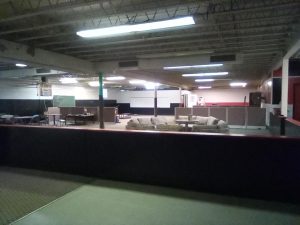
Efforts continue to get the Bassett Community Center up and running again after its 2019 closure.
The center first opened in 1960. It closed in 2019 after changing hands and when operation costs became too great.
“The Stanleytown Baptist Church had taken it for quite a while and they had to give it up when they merged with another church because that church wasn’t interested in having this liability to take care of,” said Linda Crabtree, president of the Bassett Community Center Board.
She and Michael Jarrett are among the driving forces of the
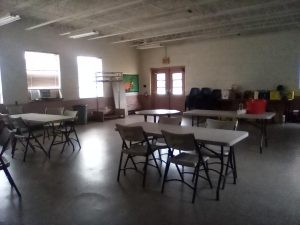
project, which seeks to breathe new life into the facility that once was a centerpiece of the community.
After the church, the keys to the center were then handed over to the Bassett Furniture Co., which does not own the building.
Still, “they were kind enough to try and take it and hire somebody to run it and kind of oversee it, even though it wasn’t their responsibility,” Crabtree said.
The furniture company spent more than $130,000 “to put a roof on the building. If they hadn’t have done that, the building wouldn’t be here, probably because it would have been destroyed,” she added.
The building now is owned by the non-profit Bassett Community Center, Inc.
While it was closed, it fell victim to break-ins and vandalisms, both of which meant much cleaning was necessary before other work could begin.
“The whole building was trashed. It’s taken us a year. Mark Nolan and I just cleaned up the office, the director’s office, less than a month ago. I guess, and that was the last area that had to be cleaned,” Crabtree said.
Now, the nonprofit organization hopes to restore the center to its former glory.
Crabtree recalled the center was “the nicest recreation center east of the Mississippi” when it was built. It offered pickleball, swimming and a swim team, volleyball, bowling, ceramics, basketball, family events, shuffleboard, and more, many other events, she said, adding efforts also will be taken to restore many of those events.
The center has several spaces that have a potential for various uses, such as large lounge areas, multipurpose rooms, a gym, an industrial kitchen, and more. The organization hopes to once again give the Bassett area a place to rent for events such as baby showers, birthdays, family reunions, and club meetings.
It also is interested in offering daycare, which is viewed as a huge need in the community.
“I think we will probably have childcare because it’s a need. The problem is there’s nobody to keep infants up to toddlers,” Crabtree said.
Another amenity being considered is a Business Incubation Center “for people who need to use computers that don’t have them, people who want to start up businesses, people who need copiers, people who need whatever,” Crabtree said.
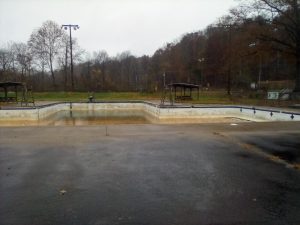
However, one of the biggest focuses of the organization is to get the pool operational again, which has been estimated to cost $110,000. Crabtree anticipates that cost will increase because the initial estimate did not include the repair of the pipes under the concrete, the baby pool, or additions
Crabtree also hopes to add such as a splash pad.
“We know that the problem is in the pipes under that concrete, because we have no water pressure on the returns or the skimmers… The pipes sat here through three winters with water in the pipes, probably, so they pipes are all probably burst,” Crabtree said.
She became determined to reopen the pool after the one at the Collinsville YMCA was filled in.
“That’s what got me started. I said, ‘That’s not going to happen over here, if I can help it,’” she said.
But the center must overcome many different obstacles before it becomes operational, including asbestos remediation, improving handicap accessibility, and resupplying heat to the building.
“The boiler is gone. It’s the original boiler, and there’s not heat in the building. We’ve got another winter to go through without heat,” Crabtree said.
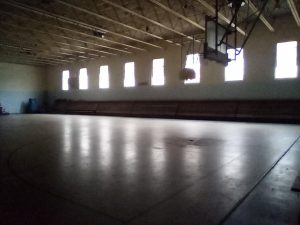
Also needed are to change rooms that were previously bathrooms back to their original use to be up to code for the building’s full capacity.
“We only have the boys’ and girls’ restrooms now available for that use, and there’s only three commodes in the girls’ restroom. And three commodes are not enough to serve 2,500 people if they’re in the gym,” which will seat 2,500 people with the bleachers, Crabtree said.
Another issue is the fact that the building is located in a floodplain, which has caused major problems in the past.
“The biggest negative we have here is we’re in a floodplain, and we can’t change that. We can’t move the creek. Twice, it (water from the creek) has gotten into the building pretty bad, and that ruined the bowling alley, because it was hard wood. It ruined the gym floor, which was also hard wood,” Crabtree said.
“They make a lot of things now that didn’t exist around the time the flooding happened. Both times, it was a result of a hurricane. They have tiger dams now that you can put up against the fencing to keep the water from coming on the property, but all of that costs money. So, we need money that’s flexible enough to use it for things like that,” she said.
And that is the biggest challenge facing the nonprofit organization, which received a $34,000 USDA grant for plumbing, HVAC, and asbestos remediation. More is needed to complete the feasibility study before the organization is eligible for most other grants.
“We really can’t go after grants until we know how much money we need. We’re applying for the American Recovery Act, Congress opened more money for that, and they made money available specifically for white elephant buildings, so we’re applying for that probably this week,” Crabtree said.
If approved, funds from the grant that is sponsored by Henry County will be used for a feasibility and use of space study.
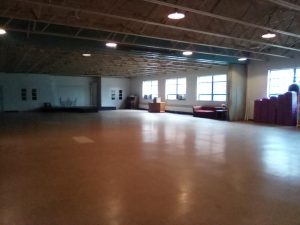
Donations from the community also are welcome – and necessary for the flexible spending that is needed.
“We’ve raised about $35,000, but $20,000 of that came from three donors, so we haven’t really raised but about $10,000. However, we haven’t done anything to raise money because we don’t know how much money we need yet or what we’re going to do,” Crabtree said.
“Everybody wants to see it open, but nobody really wants to help. I think that’s just the mindset of people these days,” she said. “It takes money, and you don’t have to give $5,000. Five dollars would help. Anything would help.”
Crabtree and Jarrett estimate it will be another three to four years before the center is completely operational again, but they hope to begin to open things up slowly after the next summer cycle.
The two and others involved in the project, have a vision of the center providing the joy to residents as it did in the past.
“For people Michael’s age and maybe ten years younger than me, we have a deep abiding love for this place because we had nothing to do until this was open,” Crabtree said, recalling some of the center’s history.
“Once this was open, we had something to do whenever we wanted to come over here. It was our savior when I was in school,” Crabtree said.



